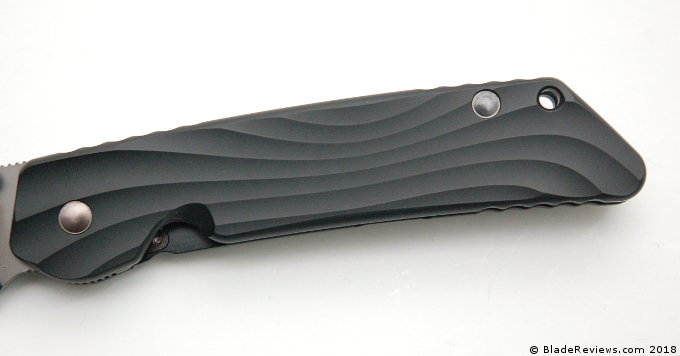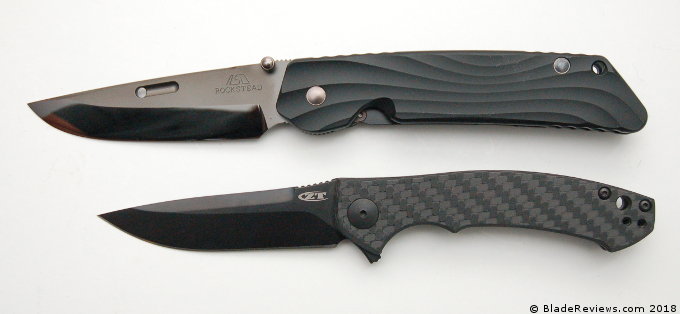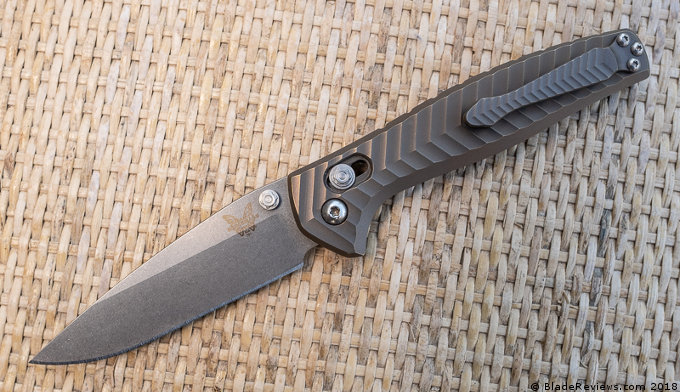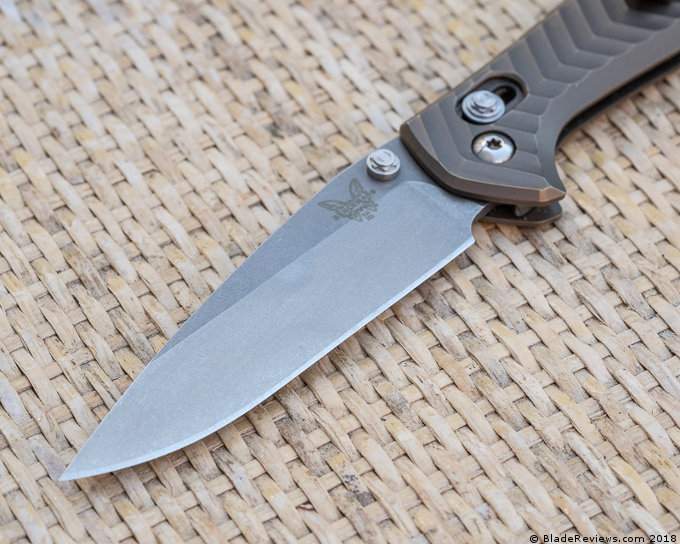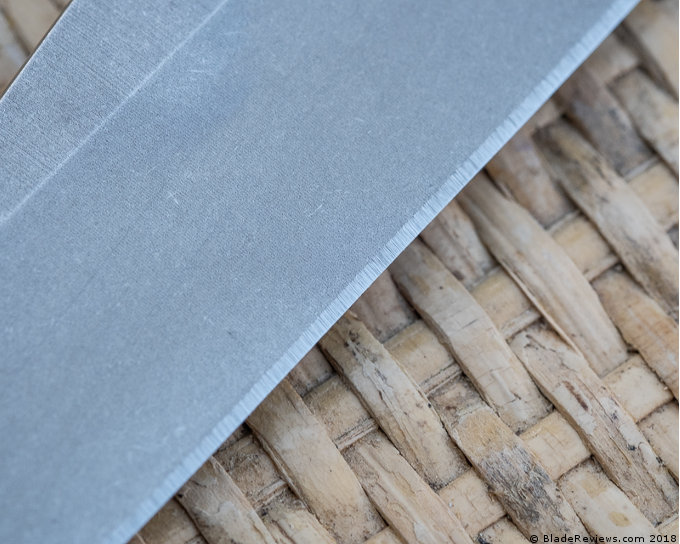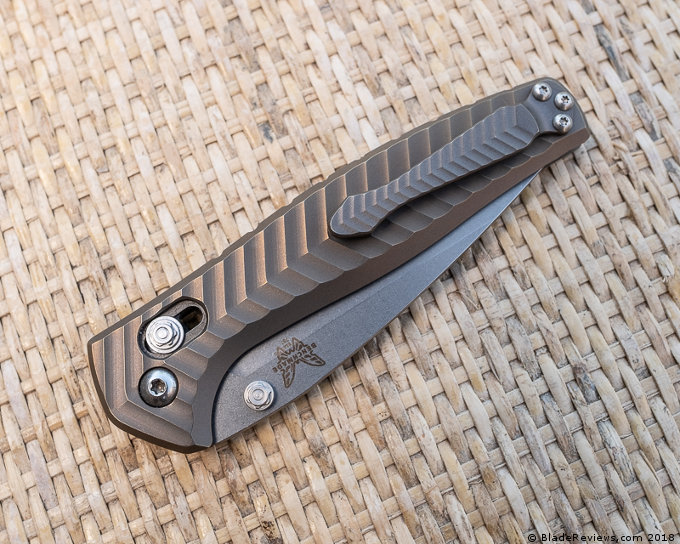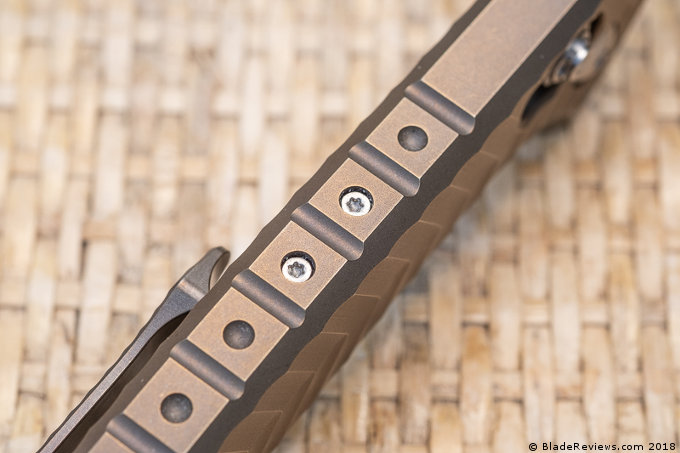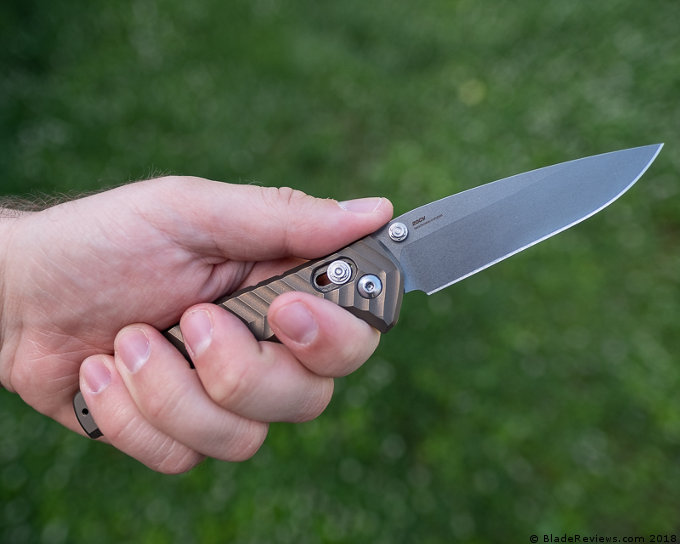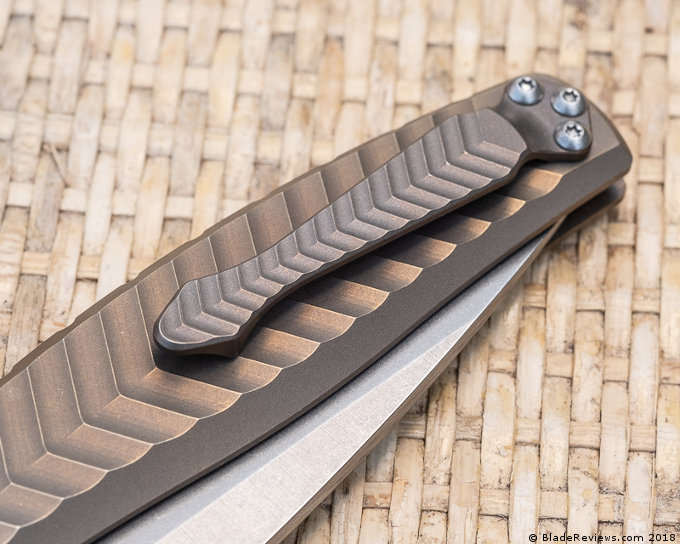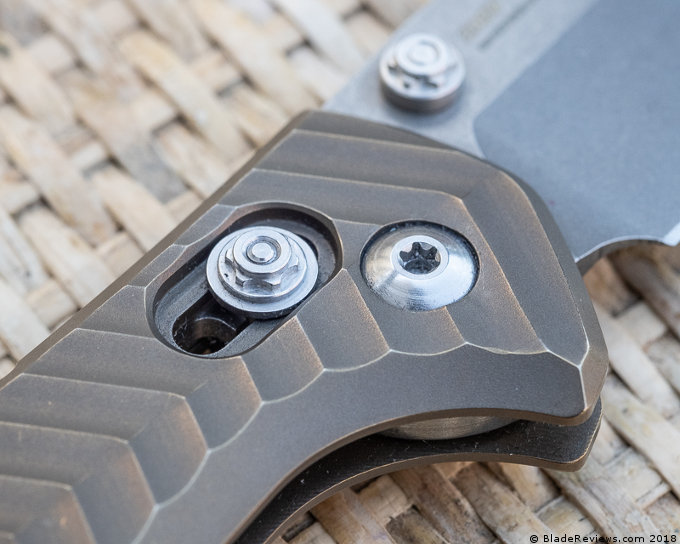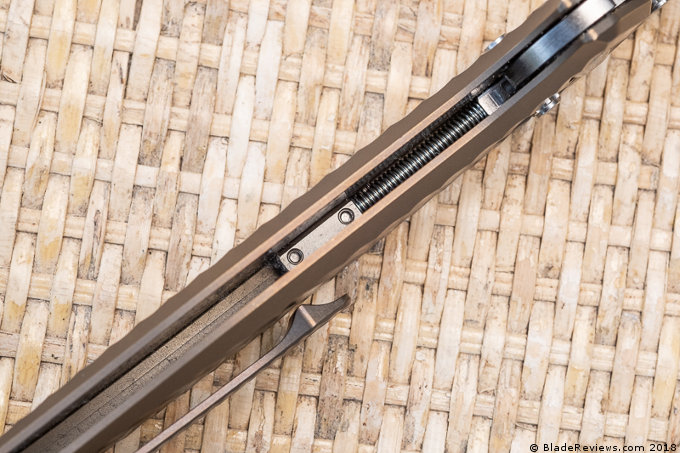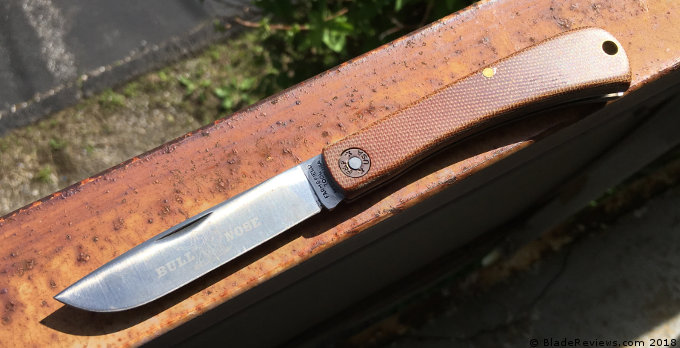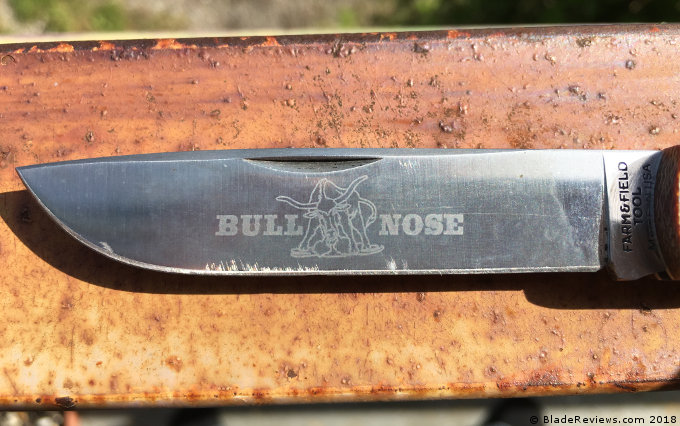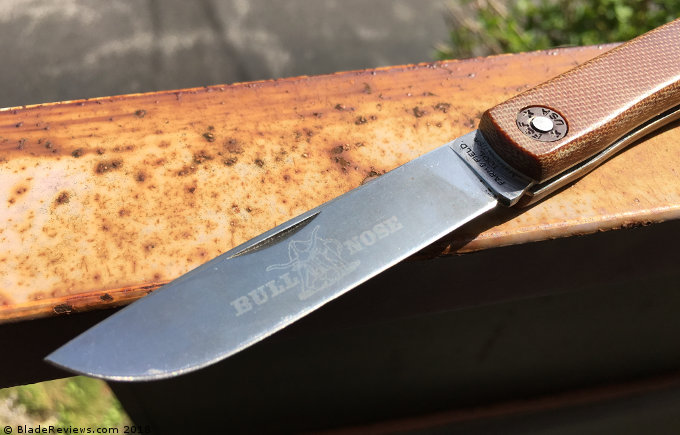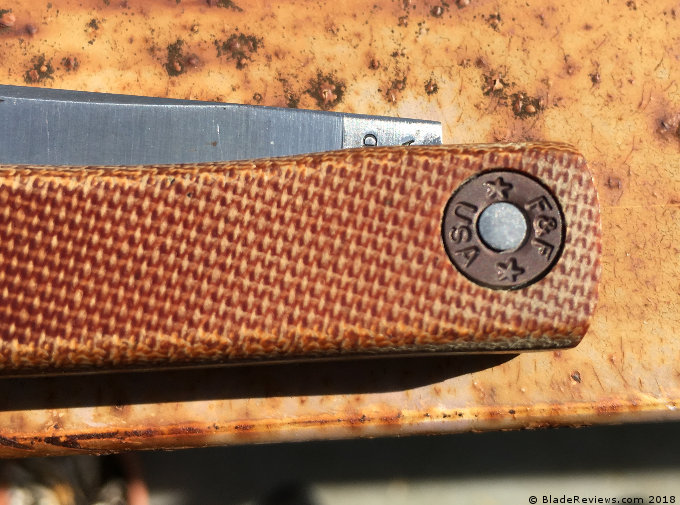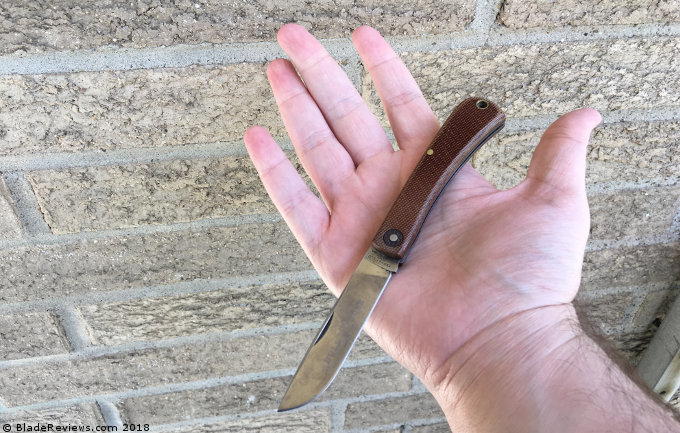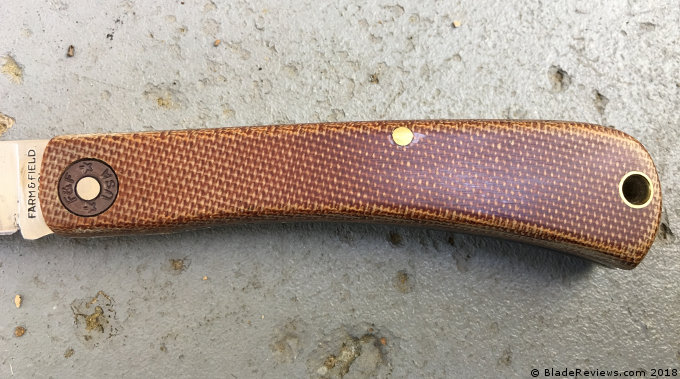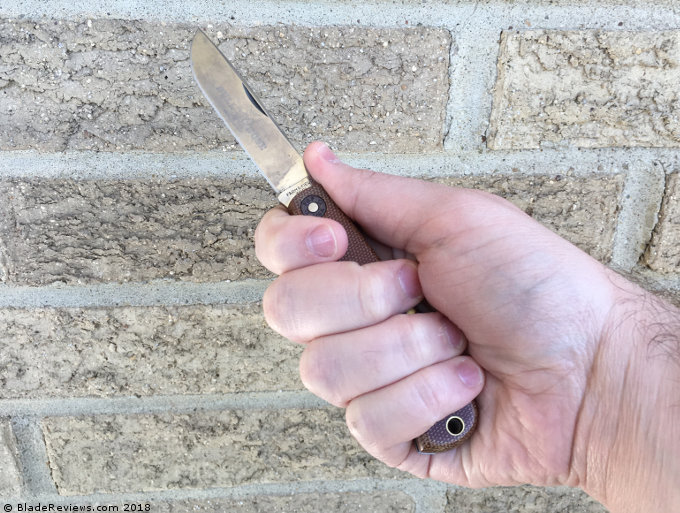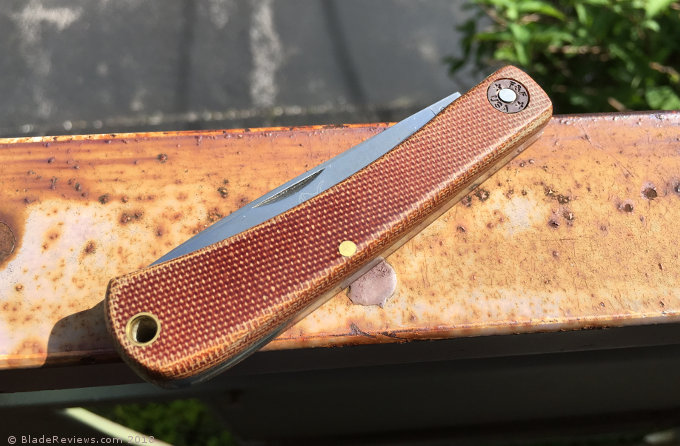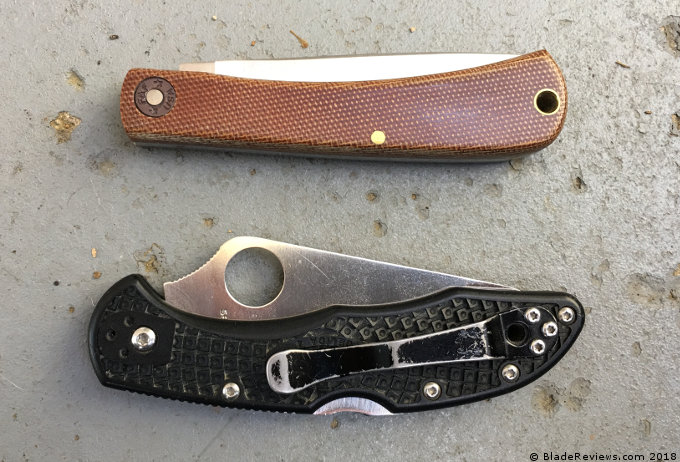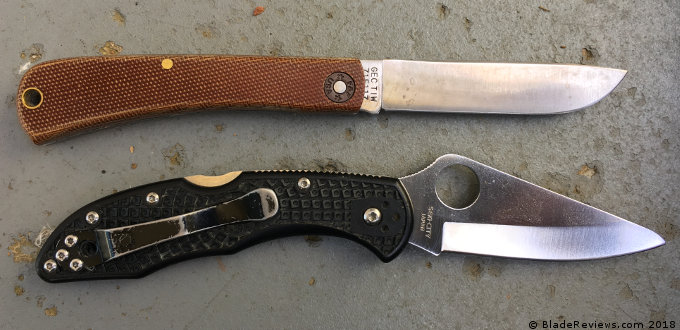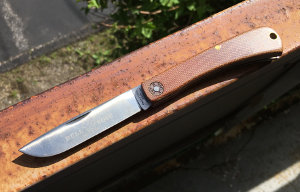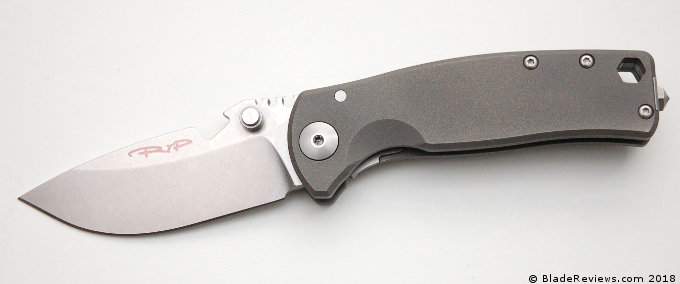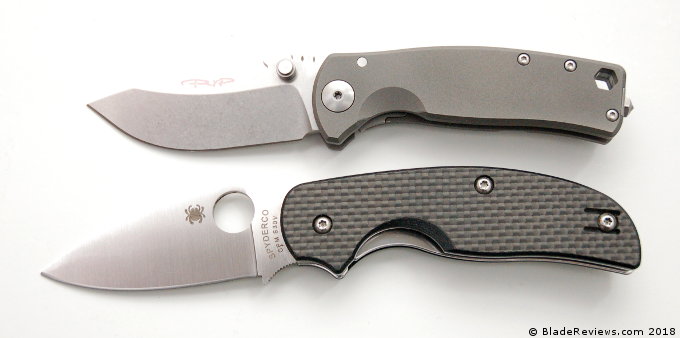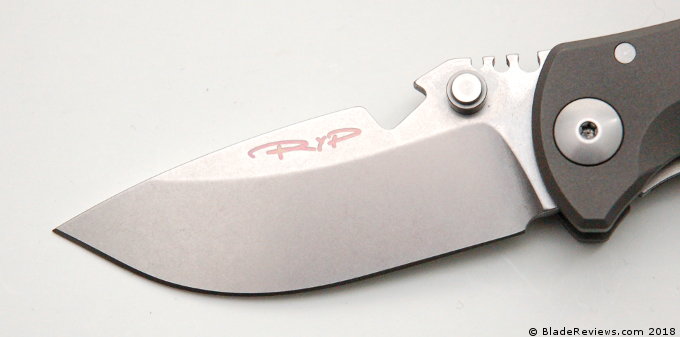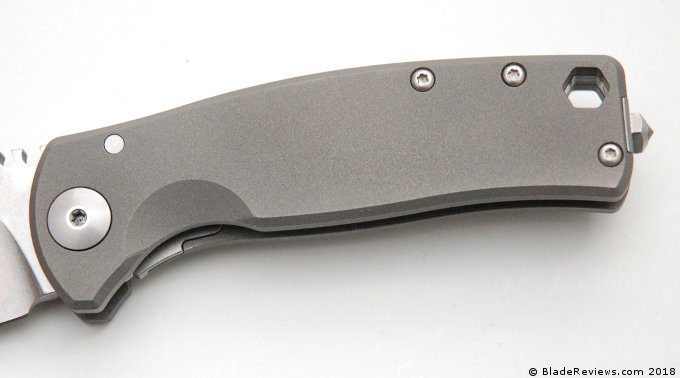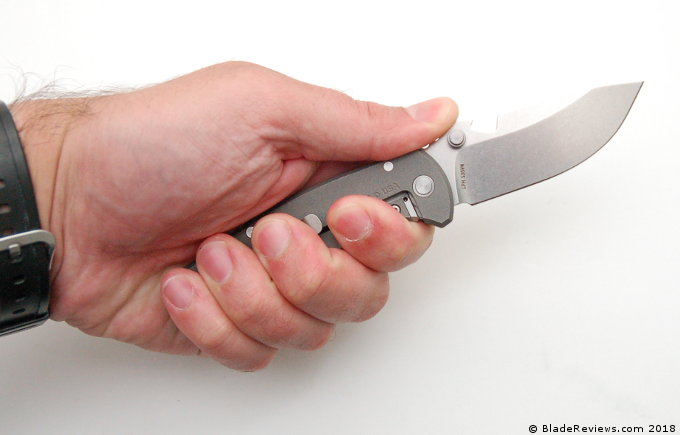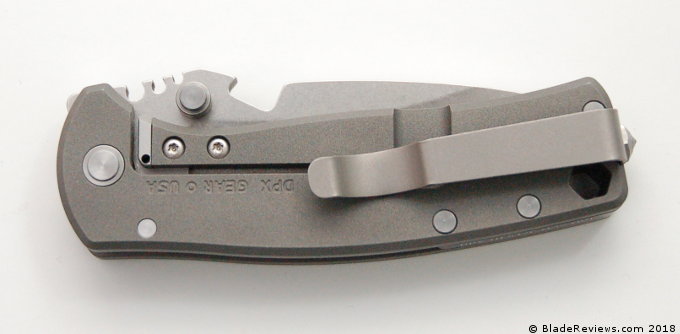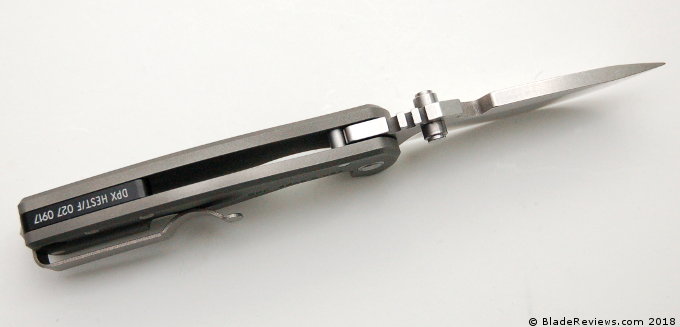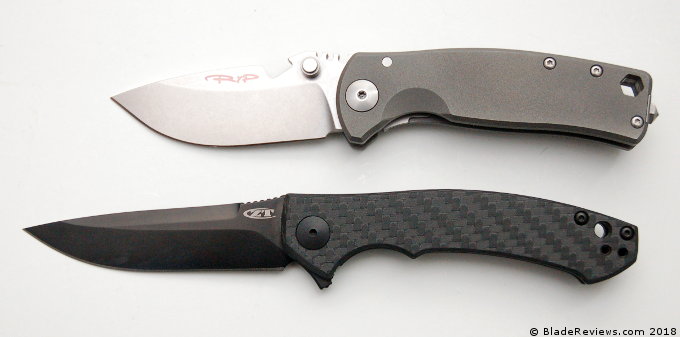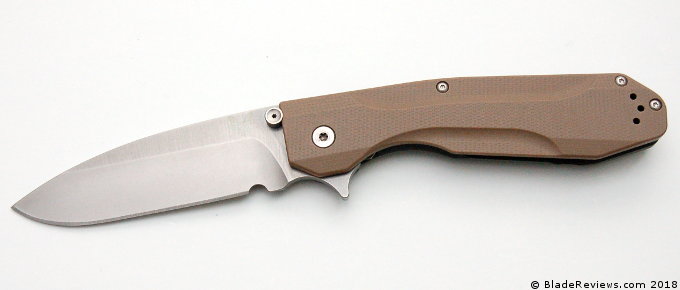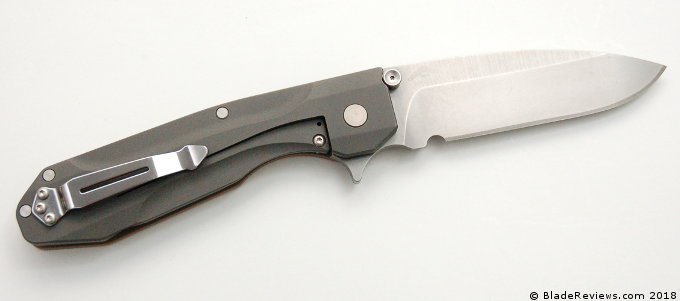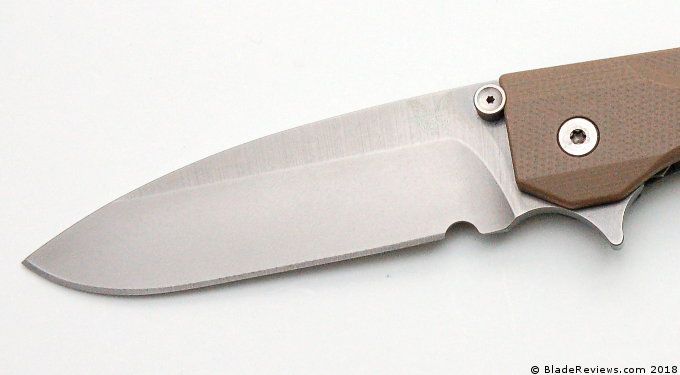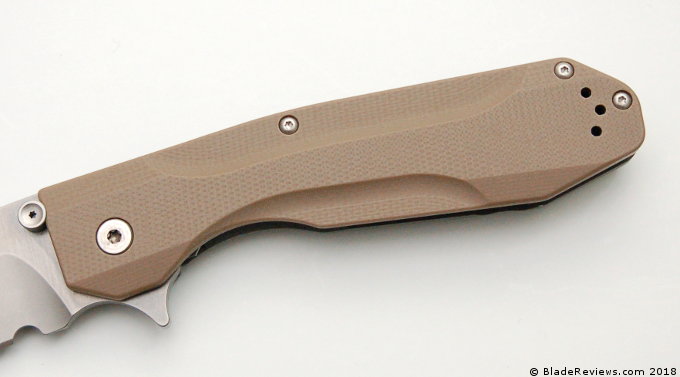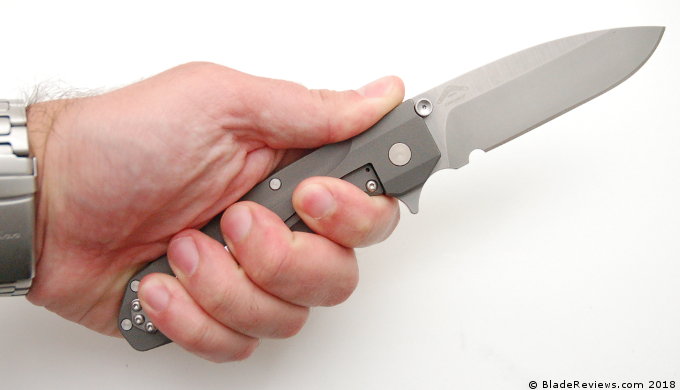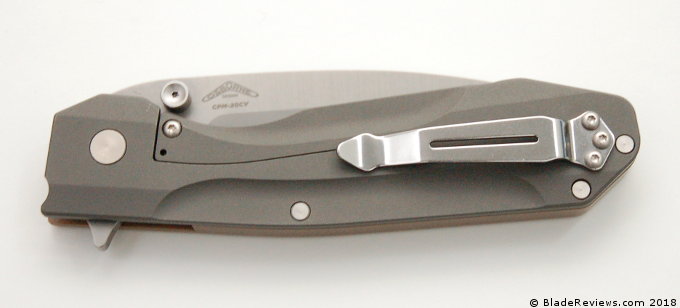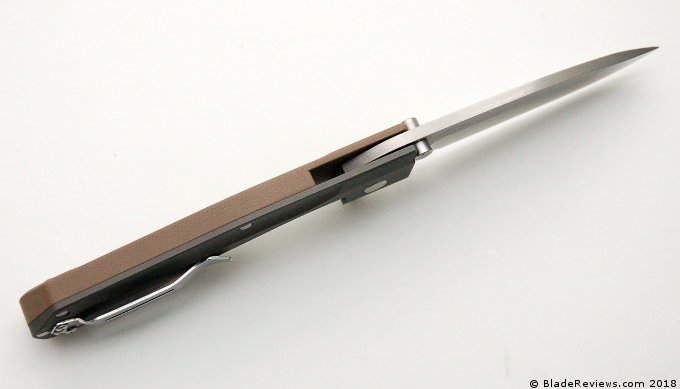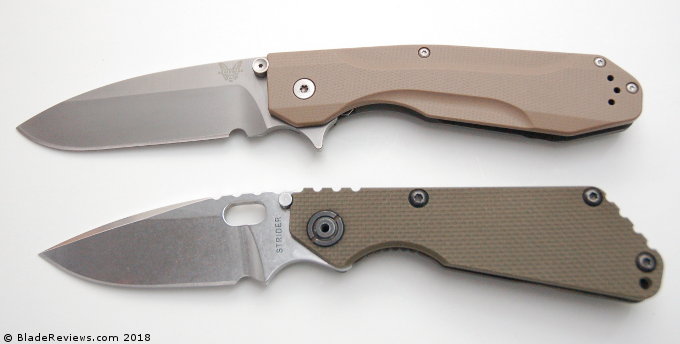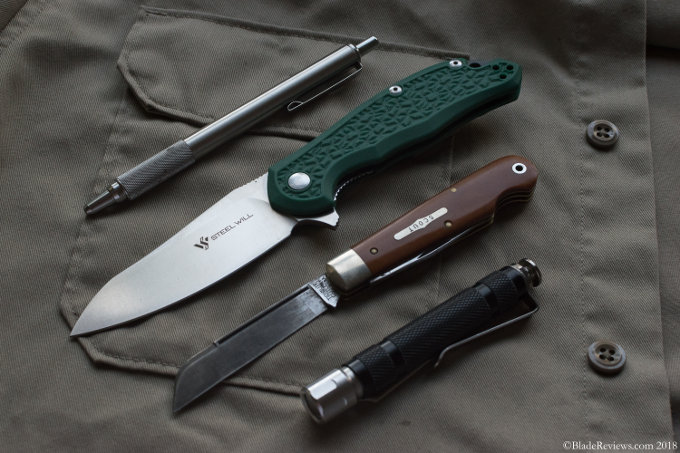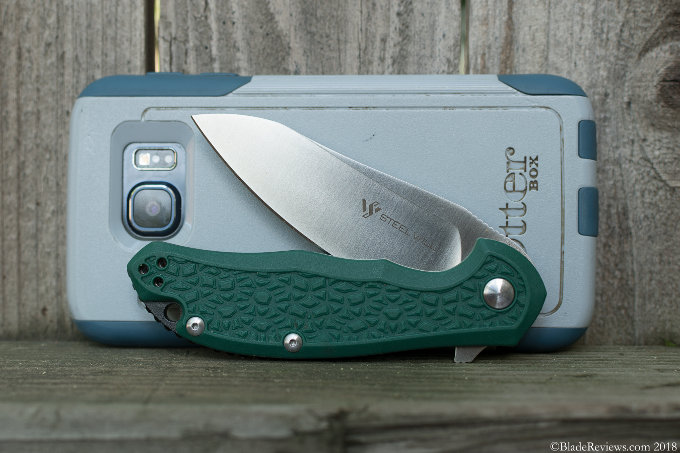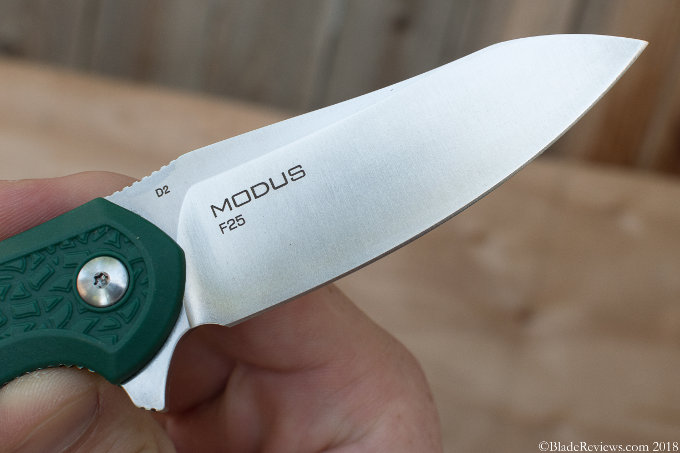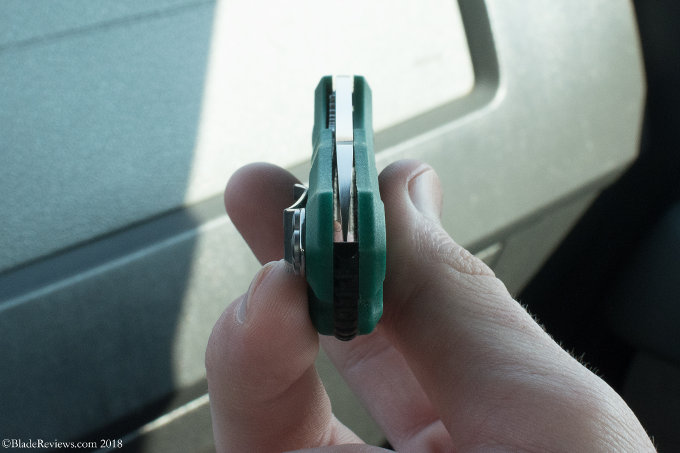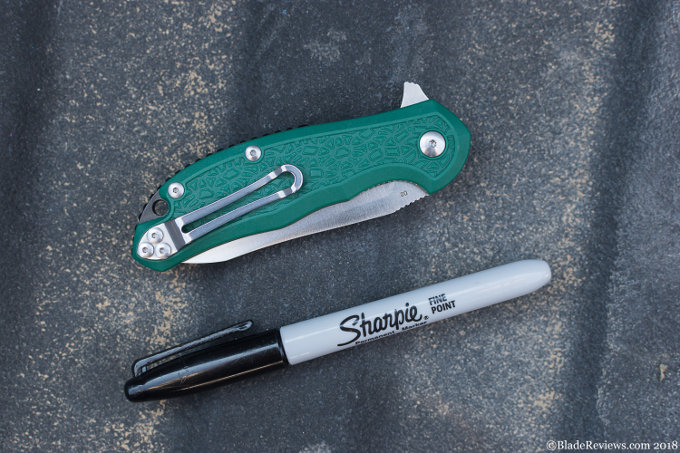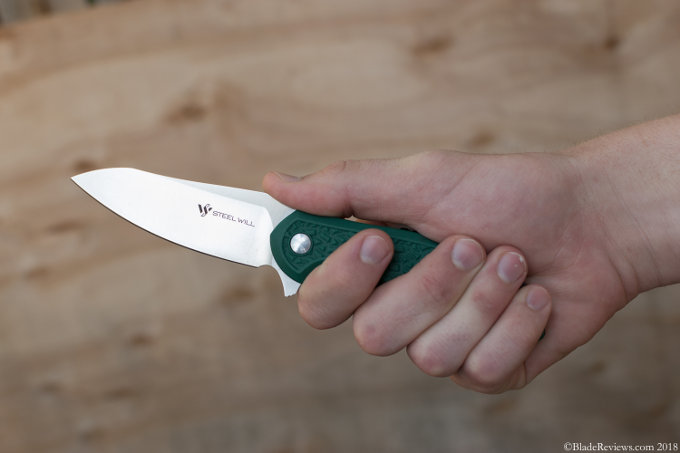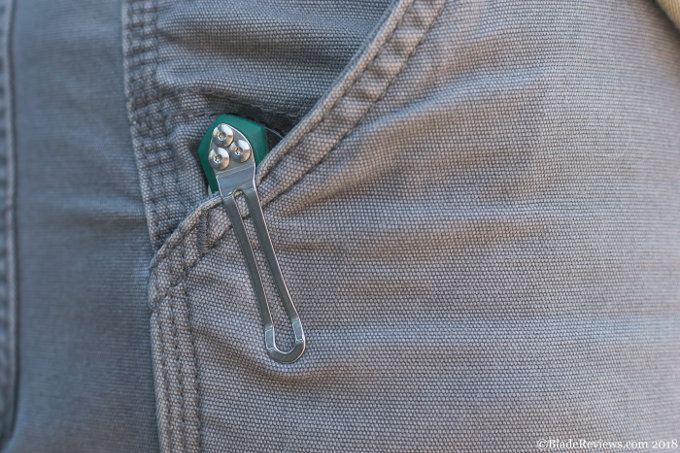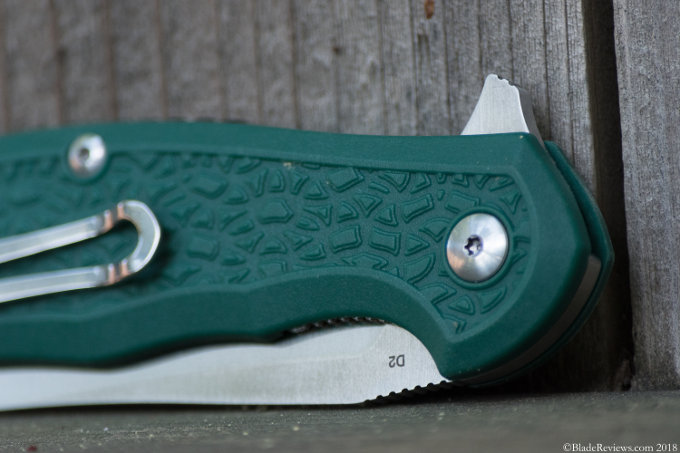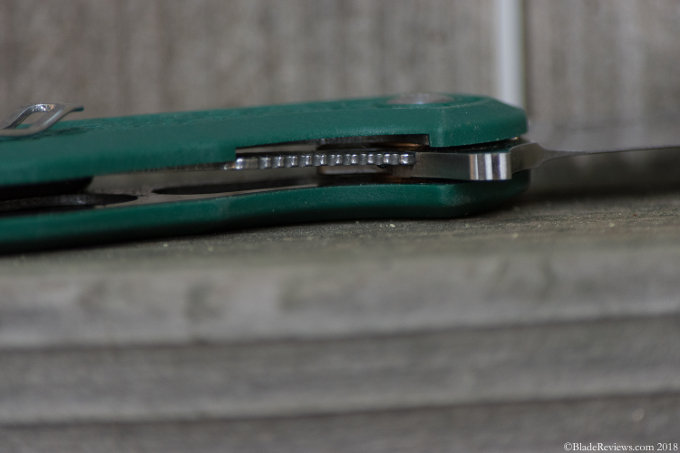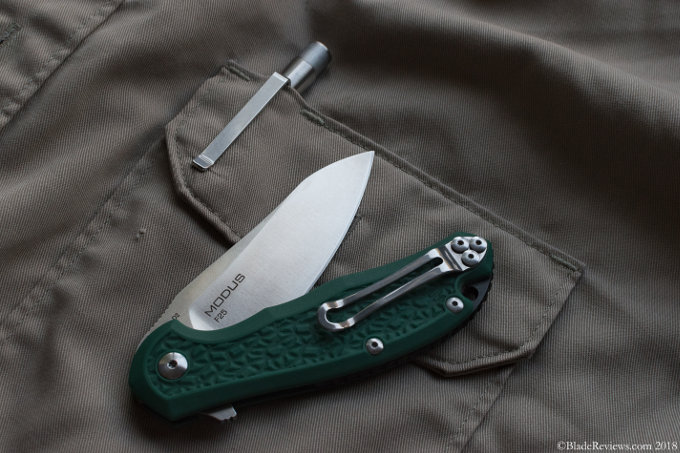Today I’ll be reviewing an expensive knife. There is no way around it. The Rockstead Higo retails for the better part of $1000. It’s insanely expensive, and it’s taken me the better part of 10 years of writing about knives to work my way up to purchasing one. I’ve considered it before, but always had something else I’d rather spend $800 on. Like food, rent, and child support. But recently I got my priorities straightened out and purchased a Rockstead for review.
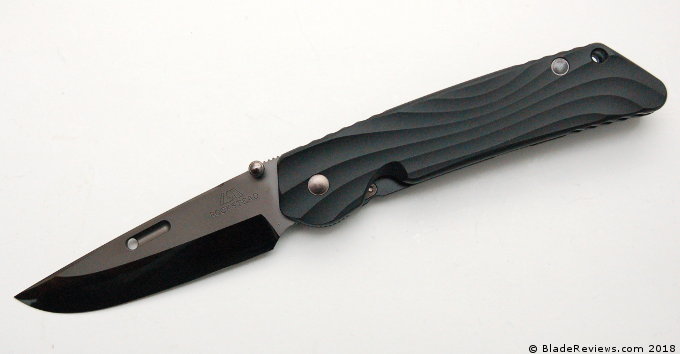
Buy the Rockstead Higo at BladeHQ
So it may come as a surprise to hear that the Higo is actually one of Rockstead’s least expensive offerings. You can easily spend $1,500 to $3,000 on one of their knives.
The Higo is one of their simpler, more utilitarian models. Relatively simple duraluminum handles and a single stand off house a beautiful, smoky black DLC coated blade. And it’s not just any blade, it’s Rockstead’s beautiful “HONZUKURI” double convex blade shape brought to a flawless mirror polish. Yes, it’s high time we reviewed a Rockstead, and examined this knife in all of it’s expensive glory. By the way, I am writing this review from a cardboard box.
General Dimensions and Blade Details
The Higo has an overall length of 8.5″, a 3.5″ blade, weighs 3.6 ounces and is made in Japan. It’s a larger knife but could be EDCd if you like the idea of daily carrying an ultra high end pocket knife. I think it is one of Rockstead’s more staid models, but personally, I wouldn’t EDC this thing. Not only is it too expensive for me to use without feeling guilty, I have major reservations regarding how I would sharpen the knife. I’ll comment on that further below.
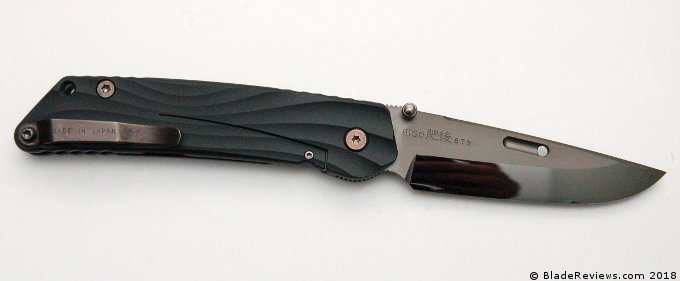
The Higo comes with a long drop point blade. The tip on the knife is fairly high, and it provides a rather abrupt belly. The blade is saber ground, and there is a hole in the flat of the blade with a short milled fuller. I am not sure if that’s for decoration, or is part of the manufacturing process. I never think too hard about that because my eye is inevitably drawn to the beautiful mirror polished primary bevel.
As an aside, this polished blade is a bear to photograph. My photography has never been great, but I apologize for the especially schlocky photos accompanying this review. I did my best to keep my mug out of the photographs, but there are still all sorts of reflections in the shots showing the blade.
Rockstead’s process for finishing the blades this way is time consuming, and labor intensive. This is part of the reason why Rockstead knives are so expensive. Rockstead does a reasonable job explaining the process on their website. Apparently someone hand sands these blades starting at 400 grit going all the way up to 2000 grit. Then additional finishing work is done on the knife through some proprietary processes that are well beyond my pay grade as a lay person.
The net result is the most beautiful blade I have ever laid my eyes on. The grinds are beautifully crisp. The machining is outstanding. And the mirror polish is flawless. The net result is stunning. There is nothing else like a Rockstead blade.
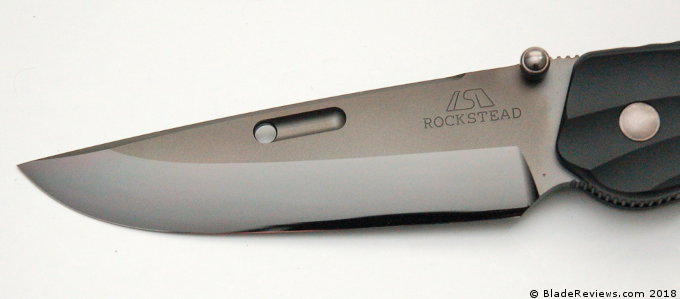
Rockstead offers the Higo in two blade steels: a DLC Coated YXR7 version (shown here) or an uncoated ZDP-189 version. YXR7 is a high speed tool steel manufactured by Hitachi. YXR7 has the enviable combination of being tough, but also being able to be heat treated to a high hardness. Here is a link to the zKnives data sheet on YXR7.
Rockstead states that it’s the durability of the YXR7 that allows them to put an ultra thin 3 micron thick coat of DLC over the blade. Paired with a less shock resistant steel, the DLC coating would crack like an egg shell. But when paired with YXR7 the shock is dissipated and you are left with an otherworldly blade.
Each knife is individually checked for hardness, and Rockstead reports that on the information card that comes with the knife. My particular knife was heat treated to 65.2 HRc. Impressive.
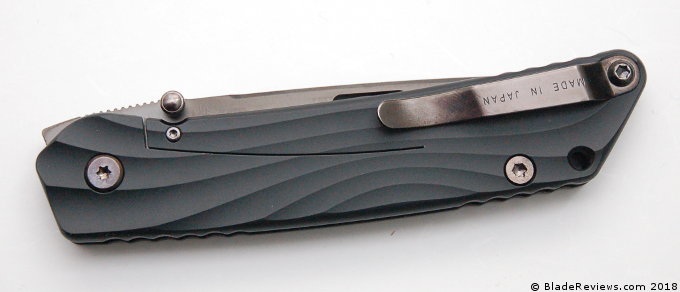
OK, this is normally the part of the review where I comment on the real world performance of the knife after extensive carry and use. That never happened with the Higo. It’s just too nice of a knife for me to get down and dirty with.
Furthermore, I’m concerned that if I used the knife I’d be unable to sharpen it. Especially this DLC coated variant. With the ZDP-189 version you can probably maintain the edge with careful stropping. But here, only a teeny tiny bit of the edge is exposed. The rested is coated in DLC. How the hell do you sharpen this thing? Rockstead offers a “free sharpening service” but you need to ship the knife back to Japan for that. Sorry guys, but I didn’t want to go down that path with this knife.
I will say I’ve been to the Rockstead booth at Blade Show a few times and they had many samples available, and they would cut phone books and rope with the knives at the show. They can certainly cut, and from what I understand they hold an edge unlike anything else thanks in part to the insane hardness and unique blade geometry.
But I can’t speak from personal experience. Instead, I’ll embed a video from Rockstead showing some of their performance testing:
Handle, Ergonomics, and Pocket Clip
Compared with the magnificent blade, the handle is a little less interesting. It’s still beautifully machined, but lets face it, few things can stand up to the blade of a Rockstead. Here we have black anodized duraluminum handles. A pleasant wave pattern has been milled into the handles. Execution of the handles themselves is great, but one area leaving me wanting a little more is with the hardware. The hardware almost appears like cheap pot metal compared to the blade. I’d love to see some decorative hardware or polished hardware to match the blade. As it stands, it appears more like an after thought. At this price everything needs to be special.
I have no complaints in the ergonomics department. This simple and straight forward handle design. There is plenty of room, and an absence of excessive curves and ‘ergonomic features’ means that the handle will be comfortable for most people. That said, you do get light jimping on both the top and bottom of the blade, toothier jimping on the handle, and a finger choil. All of this stuff has been exercised with a degree of restraint to the point where it all plays in the background. It’s the ergonomic equivalent of muzak. Present, but hard to register unless you pay close attention.
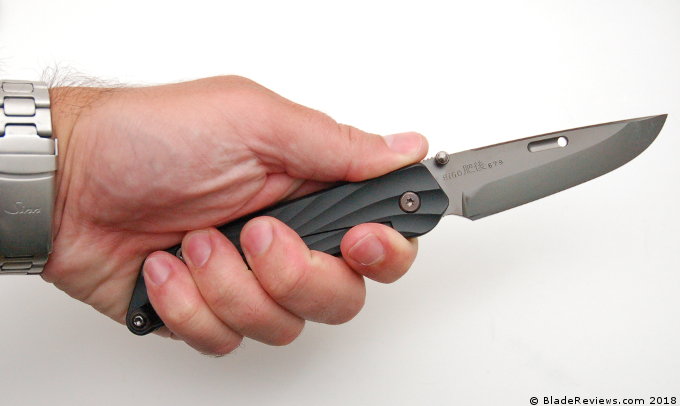
The pocket clip is downright primitive compared to the rest of the knife. It’s a DLC blackened spring style clip, mounted high on the handle for deep carry with a single torx screw. There is nothing wrong with any of this, but it is crudely stamped “MADE IN JAPAN”. Not the end of the world, but not the most elegant solution either. Given the attention of detail lavished on this blade I would have expected a little more.
The good news is that the pocket clip works great, and the knife carries well. It’s a long knife, but thin and lightweight, so you don’t notice it much. The pocket clip has good spring retention, so it keeps the knife planted in place, and it all but buries completely in your pocket. Not bad, but not amazing either.
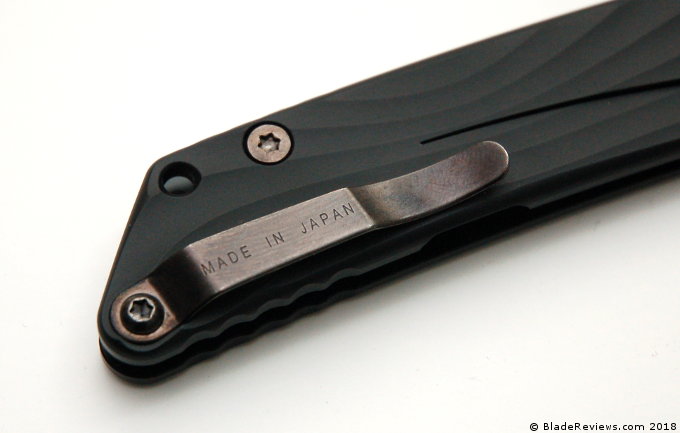
The clip is also a fingerprint magnet. Much like the blade.
Deployment and Lockup
The Higo primarily makes use of dual thumb studs to get the blade open. The thumb studs are prominent, and the blade is easy enough to open with either hand. Additionally, the exposed tang when closed gives you the option of a “front flipper” of sorts. You can’t actually flip the blade open, but you can get the blade mostly open with this faux flipper.
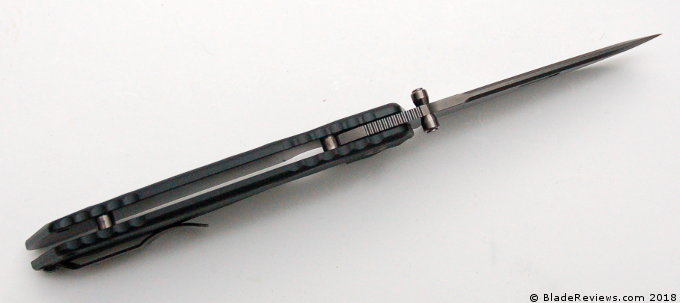
The blade rotates fluidly on generous phosphor bronze washers. It isn’t a fast deploying knife, but it feels purposeful.
The frame lock of the Higo engages with a soft click. It’s an aluminum framelock with a stainless steel lockbar insert. I think it is interesting to note that the lockbar insert has also been given the DLC treatment. Little details like that are good to see. Frankly I expect them on a knife this expensive. Lockup is a solid 50% and there is zero blade play of any kind.
I struggled to find a good knife to use for the size comparison section. The blade of the Higo is so tough to photograph, that I ended up choosing the Zero Tolerance 0450CF. The matte DLC blade on the 0450CF made it possible to get a workable photo.
Blade centering is absolutely perfect on my knife. Once again at this price point I would expect nothing less.
Rockstead Higo Review – Final Thoughts
On one hand the Higo is a stunning knife. The blade is unlike anything else I have reviewed. It’s an otherworldly work of art. You simply won’t find anything else like it on the production market. That beautiful blade is combined with an elegant handle. It is a juxtoposition of Japanese elegance and their fanatical pride in what they do. Rockstead has taken the production pocket knife to extremes few of us would consider. In these ways the Higo is a truly special knife.
On the flip side I don’t think this is a particularly practical knife. It’s so expensive I’m hesitant to use it. And if I were to use the knife, it would be damn near impossible for me to sharpen it. Perhaps if I selected the non-DLC coated variant I could strop this thing, but I don’t know how I would sharpen this DLC coated blade with its impossibly small microbevel edge. The only answer is to send it off to Rockstead. They will sharpen it for free provided I can prove I’m the original owner, but I would need to ship the knife to Japan at a considerable expense and risk.
For these reasons I cannot recommend this knife as a daily carry, unless you are a talented sharpener and willing to use a near $1,000 folding knife. Most people won’t do that, and of the few that will actually purchase a Rockstead Higo, I suspect they will treat the knife like I have: gingerly. With so many great $50-200 folding knives in my collection, the Higo has been relegated to a safe queen and curiosity. It’s a beautiful safe queen, but a safe queen none the less.
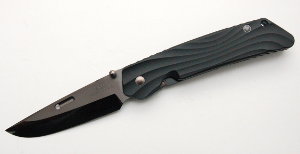
Rockstead Higo
From: BladeHQ
I recommend purchasing the Rockstead Higo at BladeHQ. Please consider that buying anything through any of the links on this website, including Amazon.com, helps support BladeReviews.com, and keeps the site going. As always, any and all support is greatly appreciated. Thank you very much.
